WORLD TRAVEL NEWS ARTICLE
MYANMAR
Myanmar, formerly known as Burma (the name of the country was officially changed to the Union of Myanmar in 1989) is a turbulent little country whose struggles and unrest have sadly deterred many people from visiting and seeing the abundant wildlife, friendly people, rich culture and peaceful beaches and forests that it has to offer.
The country itself is diamond-shaped and shares borders with many other countries – China, Laos and Thailand in the east and Bangladesh and India to the north. To the west and south is the Indian Ocean. The Irrawaddy River runs through the centre of the country and fans out into a delta on the south coast; Yangon sits on one of its many mouths.
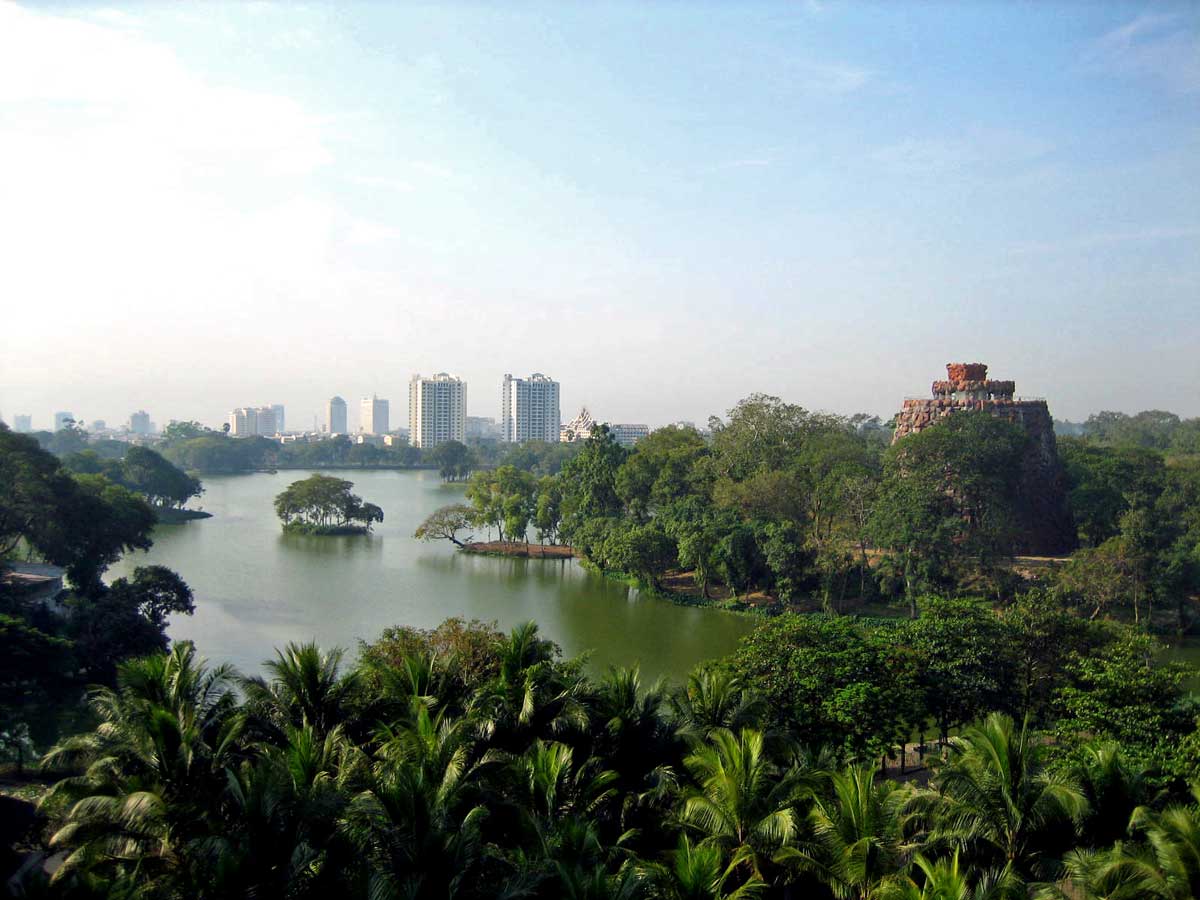
Kandawgyi Lake, Yangon
To the west of the country you’ll find the Arakan, Chin and Naga mountains and the Patkai Hills; the Kachin Hills are to the north and over to the east is the Shan Plateau. A great deal of Myanmar is covered by dense subtropical forests.
If you’re thinking about stopping off at Myanmar on your travels, you’re hit with a big dilemma. It’s a fascinating and beautiful country, complete with thousands of pagodas, an interesting culture and some lovely ancient towns. The locals welcome tourists as they bring news and a glimpse of the world outside Myanmar as well as much-needed economic benefits.
History
Even before the current harsh regime, Myanmar was ruled with an iron fist. Between the 19th Century and World War II, the British Empire was in charge, and prior to that there were old-style kings who only managed to get into power by systematically eliminating anyone who might also have a claim on the throne.
In the 9th century the Himalayan Bamar people were at war with the Tibetan Plateau’s Mon population in a war that carried on for so long that the cultures eventually ended up merging with each other and making the war largely pointless.
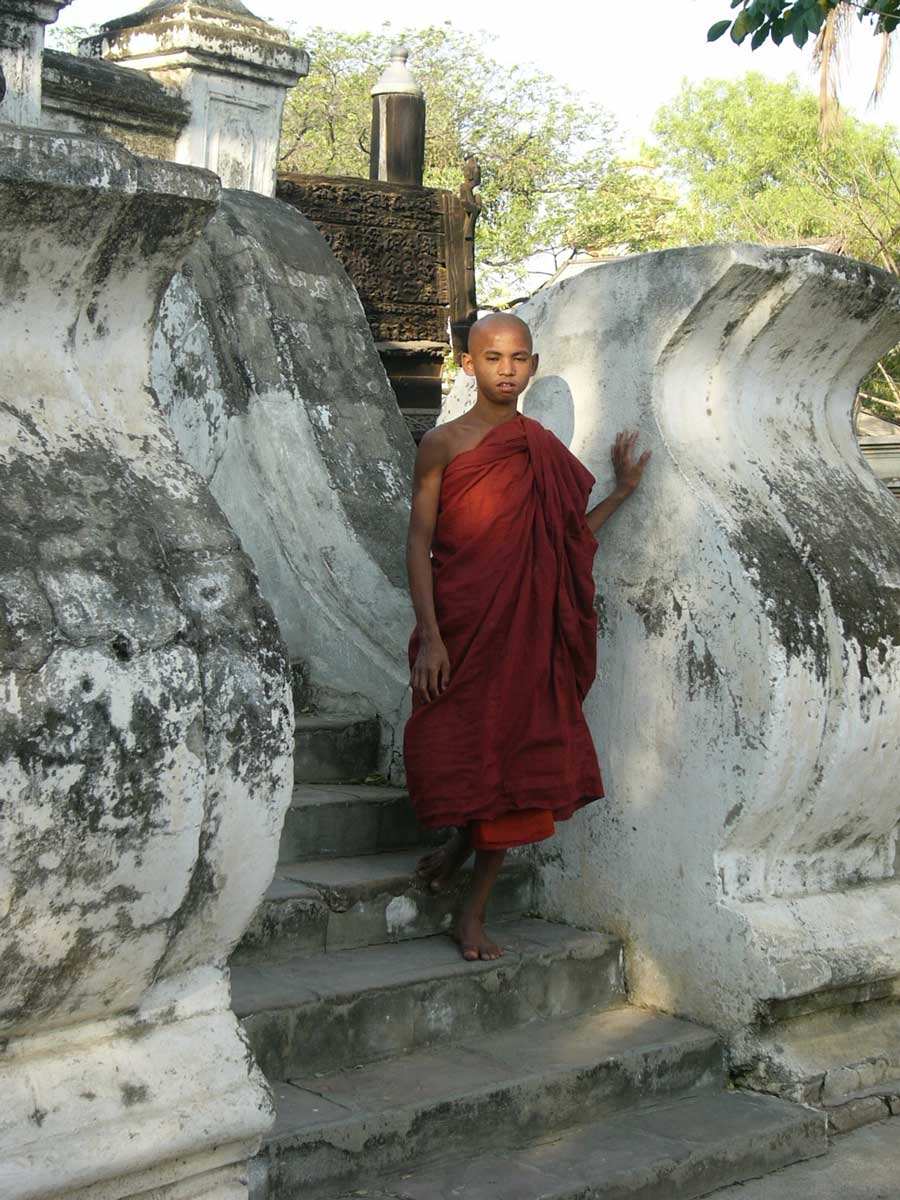
Young Buddist Monk
King Anawrahta converted the country to Theravada Buddhism in the 11th Century, and this marked the beginning of something of a golden age in the country’s history. King Anawhrahta was also responsible for building the first temples at Bagan. He carried on building stupa after stupa (dome shaped Buddhist shrines) as did his successors, and the sheer cost of all the construction work weakened the power of the kingdom.
Kublai Khan and his Mongol army took advantage of the weakness and stormed into power in the 13th century – this was the beginning of Myanmar’s downfall. History seems to have glossed over the fate of the country following Khan’s takeover. In the 16th century the Europeans arrived to see what was advantageous for them. The Portuguese were the first to take power and by 1885 the British had taken over. In doing so they exiled the Burmese King and Queen to India and turned their lovely royal palace into a barracks.
Large numbers of Indians came to Burma to work as civil servants, and many Chinese were also tempted. The British improved the infrastructure by building railways and ports, but many Burmese were unhappy with the colonisation, and started their own nationalist movement.
During World War II, the Japanese and Burmese Independence Army (BIA), managed to force the British out of Burma and declared independence. The Japanese didn’t prove any more popular than the British, and alienated the population with their own harsh treatment, so the Burmese did an about-face, fighting with the Allies to get the Japanese out instead.
After the war, Bogyoke Aung San became the country’s leader. An advocate of nationalism, he managed to hold the country together during its transition to independence and during the 1947 elections his party won with an overwhelming majority. Unfortunately he was assassinated before he came to office, as were most of his new cabinet. Independence still went ahead in 1948 under U Nu but the country was beset with ethnic conflicts and unrest.
In 1962 General Ne Win led a left-wing army takeover and nationalised everything, including shops, which crippled the country economically. By 1988, the people had had enough of their incompetent government and staged massive demonstrations in favour of democracy – the confrontations between pro-democracy protesters and the military resulted in around 3,000 deaths over a period of just six weeks. Ne Win finally gave in in July 1988, but he still pulled some strings from behind the scenes.
This led to the formation of the State Law and Order Restoration Council (SLORC) and a declaration of martial law. Around the same time, SLORC also changed the country’s official name from the Union of Burma to the Union of Myanmar, because it saw the name ‘Burma’ as a reminder of its colonial past.
Aung San Suu Kyi
Bogyoke Aung San’s daughter Aung San Suu Kyi had become a contender for leadership as the head of the opposition National League for Democracy (NLD) so she was put under house arrest and the democratic election plans postponed. The NLD won more than 85 per cent of the vote when the elections did go ahead, infuriating their opponents. The SLORC responded by arresting most of the party leadership and refusing to hand over power.
Aung San Suu Kyi was awarded the Nobel Peace Prize in 1991 and released from house arrest in July 1995. In 2000 she was again put under house arrest until the UN managed to agree a release in 2002. Despite this unconditional release, she was arrested again in May 2003 and is now something of a national heroine.
Getting There
Yangon airport is 19 kilometres from the city. Buses and taxis are available into the city.
Getting Around
Air travel is the most efficient way to get around inside Myanmar and in fact it’s the only way that independent travellers can get about. Unfortunately the flight schedule is rather limited and their safety record isn’t that great.
Because of the strict internal security getting around can be restricted. You can fly into most towns, but the best way of seeing Myanmar is by boat, although trips have to be arranged as part of an organised tour.
There is a circular rail service in Yangon and some pretty old-fashioned and quite uncomfortable bus services in the cities. Yangon has blue government taxis with set fares, and there are other options with unmetered taxis as well as rickshaws. It’s a good idea to agree a price before you get in either of these, though.
Driving in Myanmar is inadvisable. The vehicles, like the roads, are antiquated and very poorly maintained, and the roads are often impassable, especially in the rainy season that is from May to October. If you do want to drive in Myanmar you’ll have to apply for a Myanmar licence at the Department for Road Transport and Administration in Yangon.
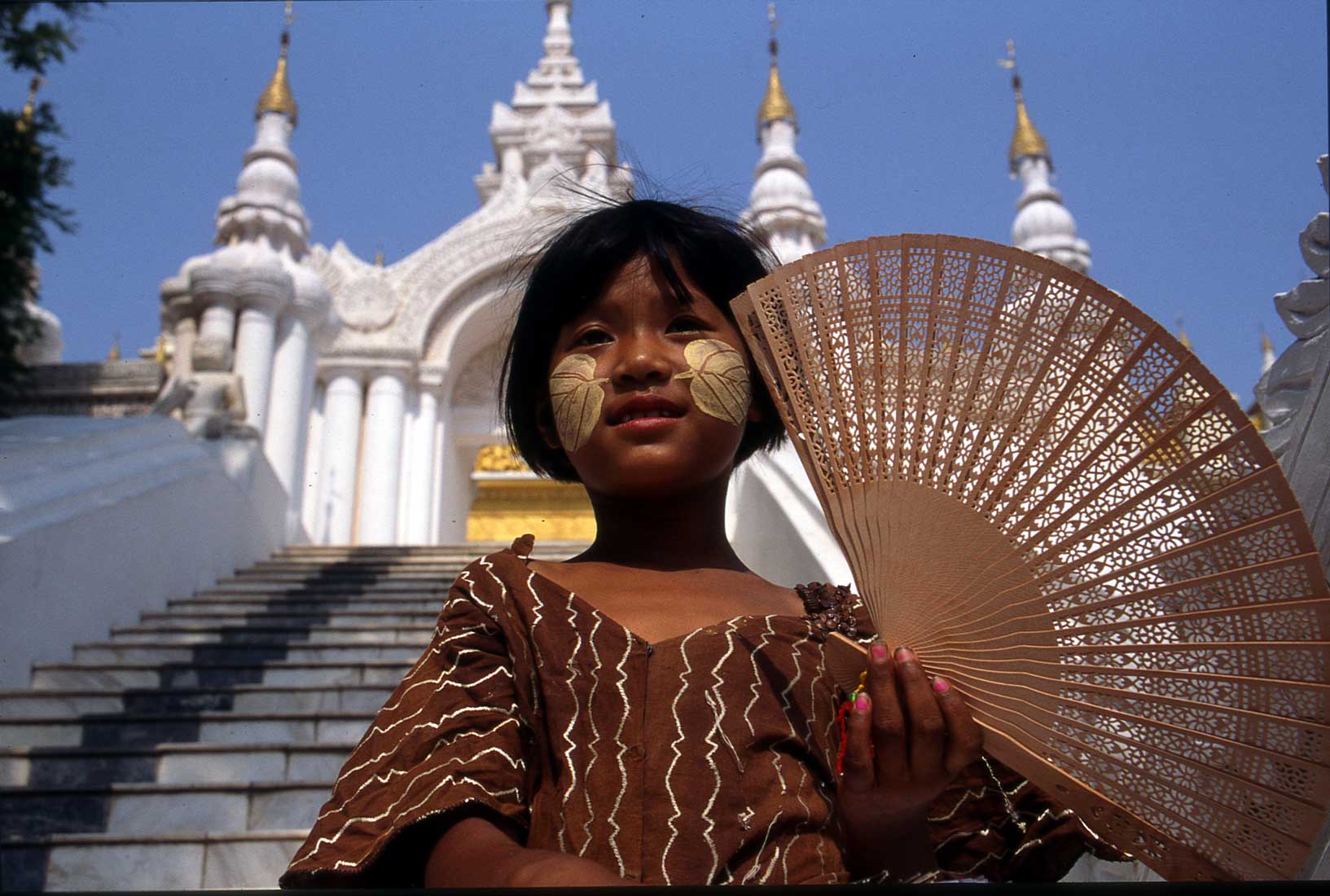
The smiling face of Myanmar - a young girl outside a temple in Mandalay
Money
The currency is the Kyat – pronounced ‘chat’. To make things even trickier, in Myanmar the currency denominations can sometimes be declared invalid with no warning at all and getting a refund can be difficult. Importing and exporting the local currency is banned.
FECs are the second legal currency in Myanmar, issued by the Bank of Myanmar just for tourists, and you can only buy them in US Dollars, at a rate of one US Dollar to one FEC. FECs can be changed into Kyats at officially authorised banks, bureaux de change, hotels and Myanmar Travel and Tour offices and you can spend them all over the country. Moneywise, it’s better to take US Dollars, which can also be used as a method of payment, and change them into Kyats, as you’ll get a far better rate than if you change them into FECs.
Euros are accepted in banks, but it can be a bit of a bureaucratic nightmare to actually change them. Traveller’s cheques, credit and debit cards aren’t accepted as a general rule and there are no cash machines at all in Myanmar. Banking hours are usually from 10:00am to 2:00pm Monday to Friday.
Food and Drink
Like many South East Asian cuisines, the food in Myanmar is pretty spicy. The mainstays of most dishes are fish, rice, noodles and vegetables with added spices – ginger, garlic, onion and chillies. If you’re eating out, you’ll find that Chinese and Indian cuisine is also on offer in many places. You’re expected to offer a 5 to 10 per cent tip when eating out in a hotel or restaurant.

Local Inle dishes
Try some of the national dishes – the Lethok son is a vegetarian spicy rice salad, Mohinga – fish soup with noodles, and the amusingly named Oh-no khauk swe that usually consists of rice noodles, chicken and coconut milk.
The fruit and vegetables in Myanmar are abundant and you can pick up scrumptious fresh fruits on food stalls and markets in most towns.
Nightlife
There isn’t a lot of night life at all in Myanmar, not the sort of night life that you might be used to anyway. There are sometimes theatre performances in Yangon, and the cinema is also popular with English language films showing fairly regularly. In some places western style music is also popular.
Shopping
It’s certainly not a shopping paradise like some parts of South Eastern Asia, but you can still find some good souvenirs if you know where to look. The handicrafts and jewellery are great places to start, and the Bogyoke Aung San Market in Yangon does sell a range of luxury goods such as clothes, jewellery and consumer goods as well as handicrafts and food items.
Mandalay is a good place to find the more traditional handicrafts – look for the Zegyo Market. For more unusual gifts, seek out the Phatahe Bazaar which sells Buddhist articles of worship.

A Yangon Market
Travel Advice
The political situation in Myanmar is unsettled. It goes without saying that you should stay well away from any demonstrations and large gatherings and never take photographs or videos of the military, police or any of the demonstrations, as this can be considered inflammatory.
Homosexuality is illegal in the country, and it doesn’t matter if you’re a tourist – in June 2007, a European National was sentenced to seven years in prison for ‘homosexual acts’.
Where to Go
Yangon
Yangon (Rangoon) was once the capital city of Myanmar, and it’s a delightful city festooned with plenty of temples, markets, delicious smelling food stalls and badly maintained colonial buildings. It’s certainly a great introduction to Myanmar, well known for its diverse population of Burmese, Shan, Mon, Chinese, Indians and Western expats.
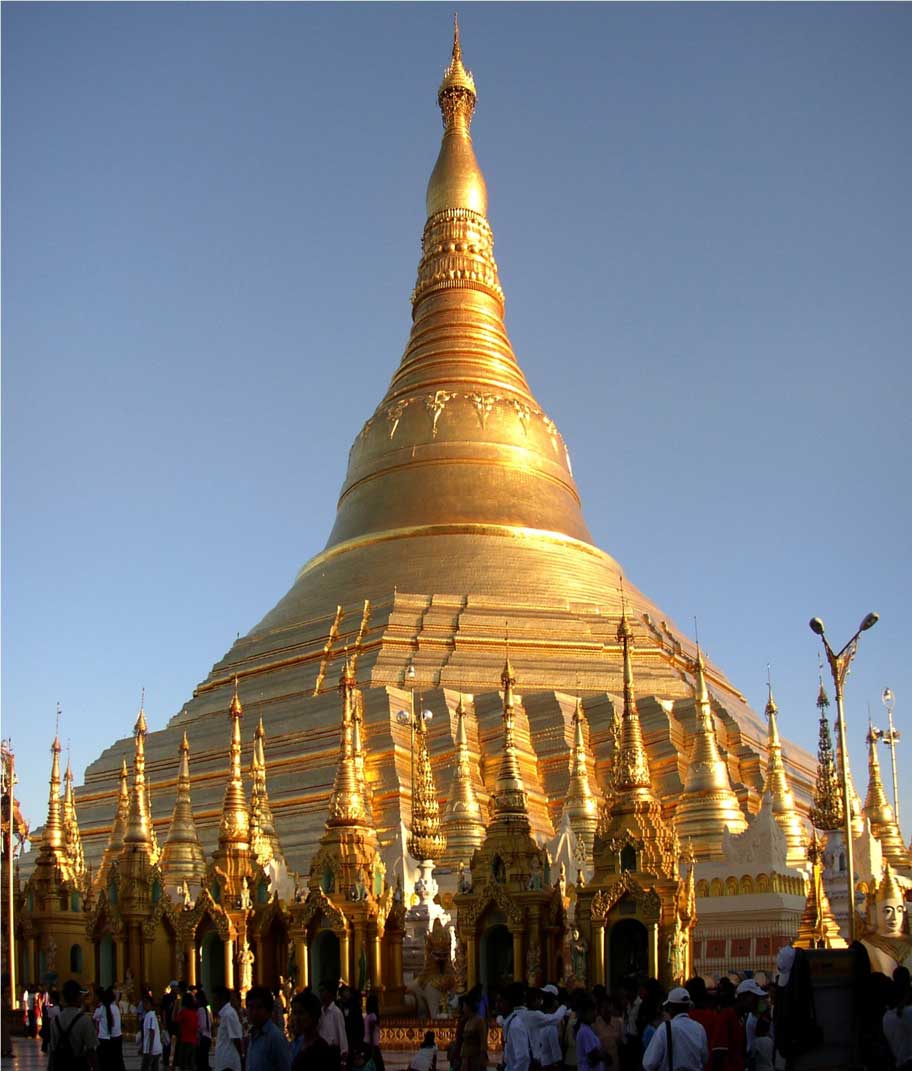
Shwedagon Pagoda
Highlights of the city include the golden Shwedagon Pagoda, said to be one of the most magnificent Buddhist shrines in Asia, and also the centrepiece of the city. It’s a gleaming golden stupa that you can see from all over town. Other places of note include the old Sule Pagoda; the Botataung Pagoda, which is completely hollow inside and contains a beguiling mirrored maze; and the Maha Pasan Guha, sometimes called the ‘Great Cave’.
Somewhat unceremoniously, the city was stripped of its capital city title in 2005, but Yangon is still the place where most things happen, the economic centre of the country and the place where most visitors head to first if they are spending any time in Myanmar.
Downtown Yangon features some tired-looking yet historic streets which are home to some of the finest British colonial-era architecture in the whole of the region.
Bagan
The city of Bagan was founded in AD 849 by the Myanmar and was considered to be the capital of their empire. For archaeology buffs, it’s well and truly an amazing site, with over 3,000 temples, stupas and pagodas all set in just 42sq km on the eastern bank of the Ayeyarwaddy River.
The most significant pagoda is probably the golden Shwezigon Pagoda that was built by King Anawrahta in 1057 for the purposes of meditation and prayer. The Archaeological Museum that’s also on-site contains murals, carvings and other artefacts on display. The site offers river excursions that are highly recommended, especially beautiful at sunset.
Bagan village also has a market, some lacquerware workshops and temples – including Thatbyinnyu Temple that is the highest in Bagan.
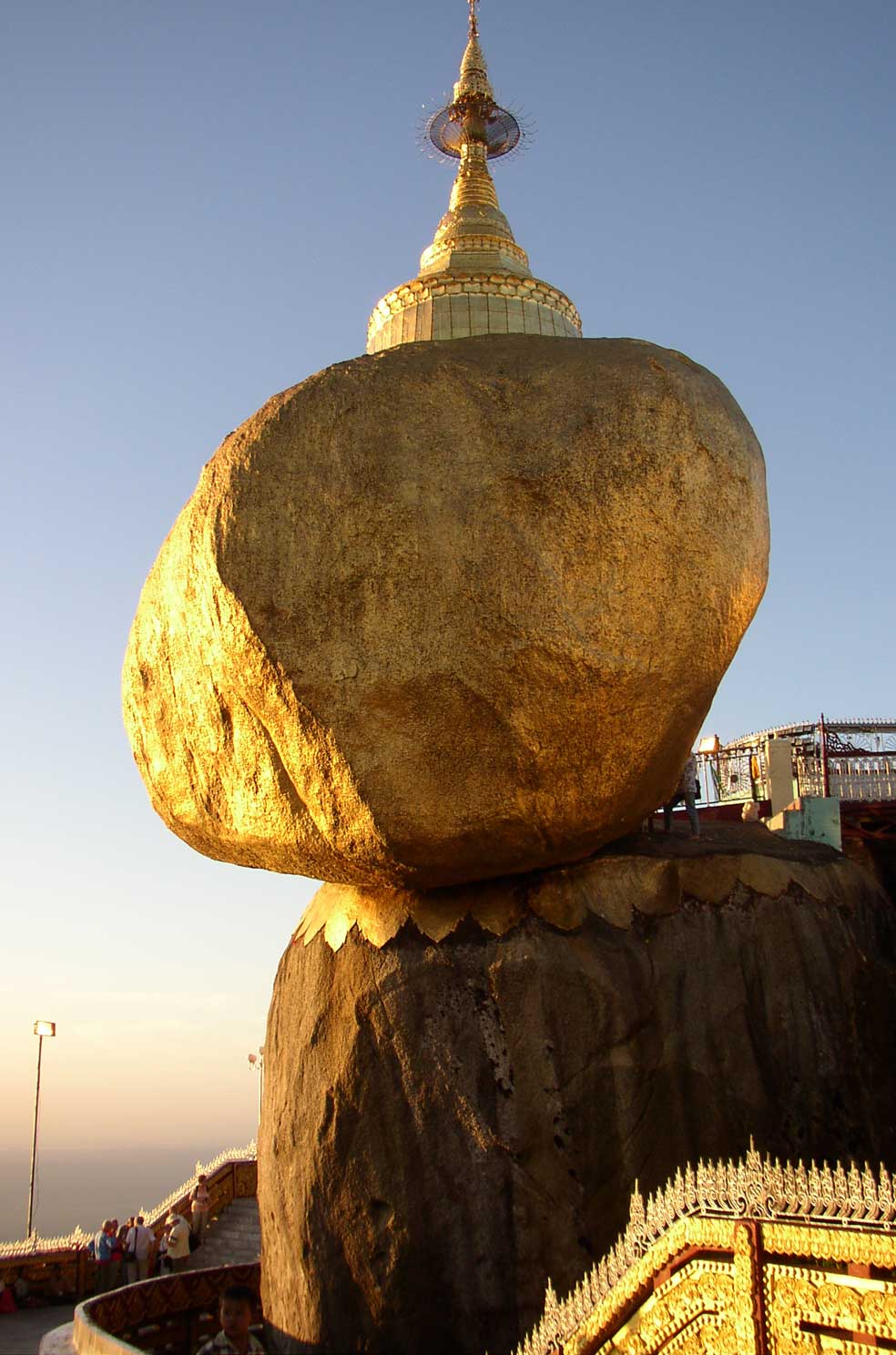
Golden Rock Pagoda
Kyaiktiyo
This is where you’ll see the amazing shrine, the Golden Rock Pagoda built on a gold-plated boulder balancing right on top of a cliff. It’s one of the most enigmatic and photogenic sights you’ll come across in Myanmar, and is said to mark the spot where a hermit donated a Buddha hair way back in the 11th century. According to legend, the king retrieved the said hair from the bottom of the sea and brought it to the site of the pagoda by boat. The boat then turned into stone.
The place certainly feels magical, and you’ll marvel at how exactly the boulder has managed to cling onto its spot for so many years. The site is popular with pilgrims in their thousands when the weather cools off between October and March.
The Lost Cities
Just outside of Mandalay you’ll find several abandoned capital cities. Sagaing has some interesting pagodas to see, and in Ava you can still see the old city walls. You can also take a trip along the river to Mingun where you’ll find the Mingun Bell that was, until the year 2000, the world’s largest uncracked hung bell.
Mandalay
The once royal city of Mandalay is another city that’s crammed full of gorgeous buildings – stupas, temples, palaces and pagodas. Some of the most famous sights include the Shweyattaw Buddha; the Eindawya Pagoda that shimmers with gold leaf; the Shwekyimyint Pagoda; and the Mahumuni Pagoda or ‘Great Pagoda’. The ruins of the Mandalay Palace are also worth a visit.
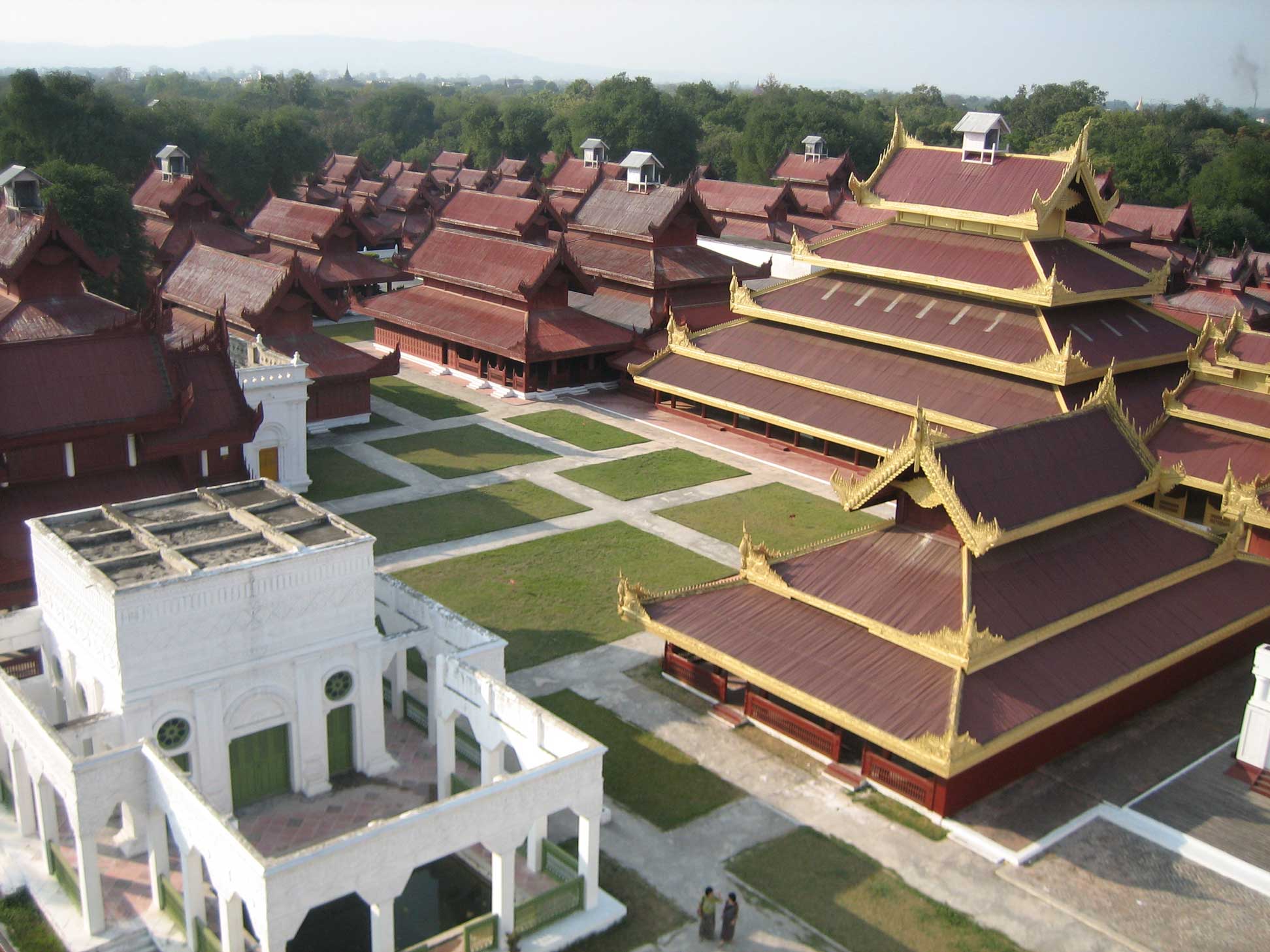
Mandalay Palace
Mandalay isn’t as old as the rest of the country and was only founded as a city around 150 years ago. It was declared the capital of the Burmese empire in 1861 when the British took over and is seen by some as a reminder of colonialism. Despite the romantic sounding pagodas and shrines, it’s still quite a modern city compared to many places in Myanmar, and it’s in the midst of a bit of an economic boom, fuelled mostly by Chinese investment and, trades in rubies, jade and heroin. There is still something of a peaceful meditative vibe here too, and the city is actually home to three in five of Myanmar’s Buddhist monks.
National parks
Myanmar has a lot to offer nature lovers and some amazing national parks in which you can go trekking and even go out on safari. Some of the best parks are the Hlawga National Park (near Yangon); Popa Mountain Park (in central Myanmar); Alaungdaw Kathapa National Park (not far from Monywa); Lampi Island and the Shwesettaw Wildlife Sanctuary in Minbu.

Inle Lake
Inle Lake
Inle Lake is a delightful sight, made up of adorable floating gardens, houses on stilts and crumbling stupas, all surrounded by impressive mountains. It’s a place to really kick back and experience the beauty of nature, get on a bike and see the sights, take a canoe or just go for long country walks. There is even a monastery where the monks’ party trick is teaching cats to jump. If you’re there between September and October, there’s a three-week Phaung Daw U festival, swiftly followed by the Thadingyut festival, one of Myanmar’s most famous events.
You may also like to read

SINGAPORE
Tour-smart takes you to the exotic vacation country of Singapore - home of ‘The Sling’, a world famous cocktail.

MALAYSIA
Tour-smart brings you the magic of Malaysia and hopefully gets you thinking about visiting this enticing country.
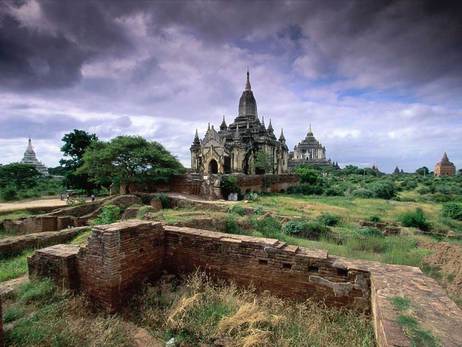
Comments